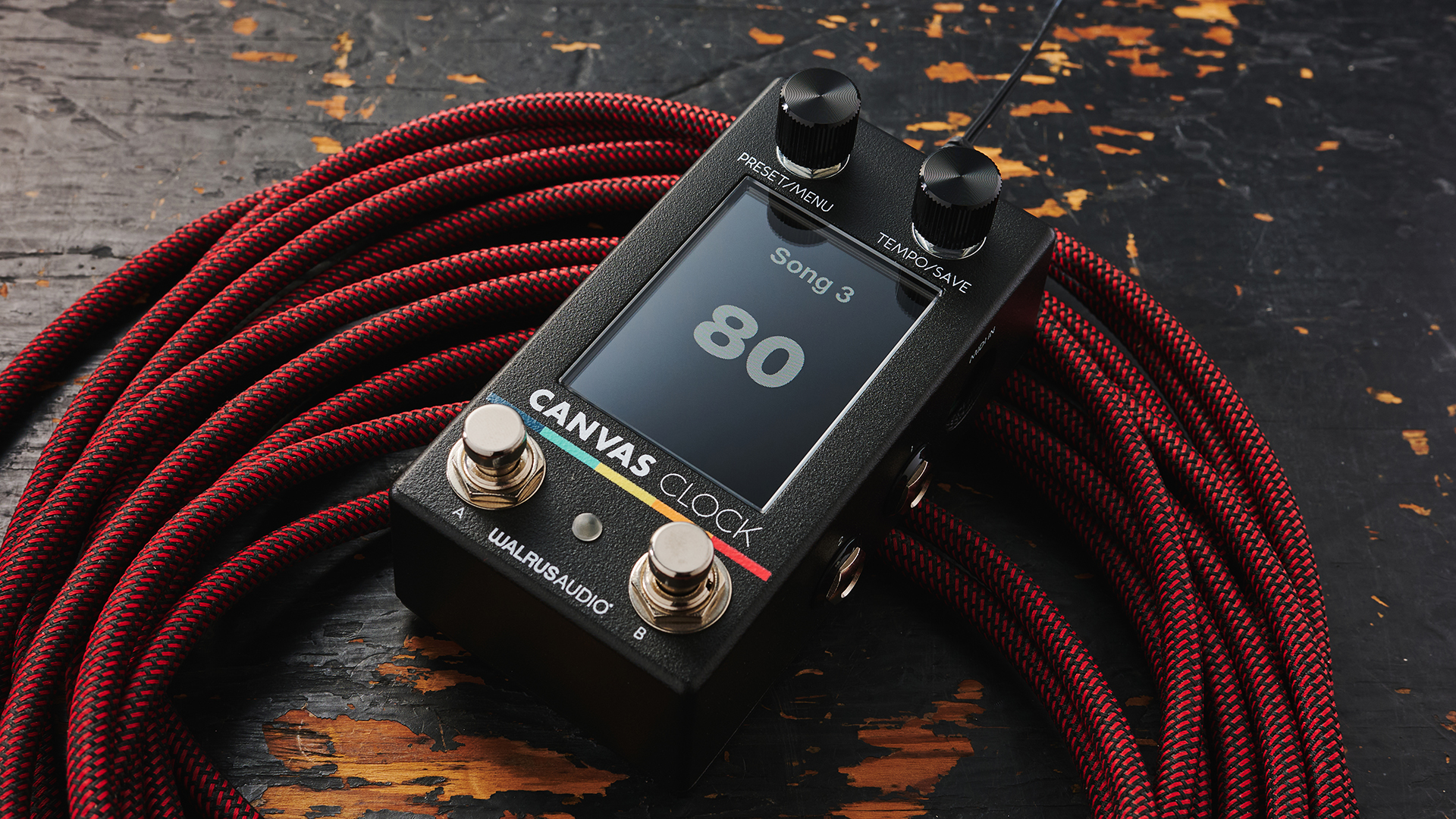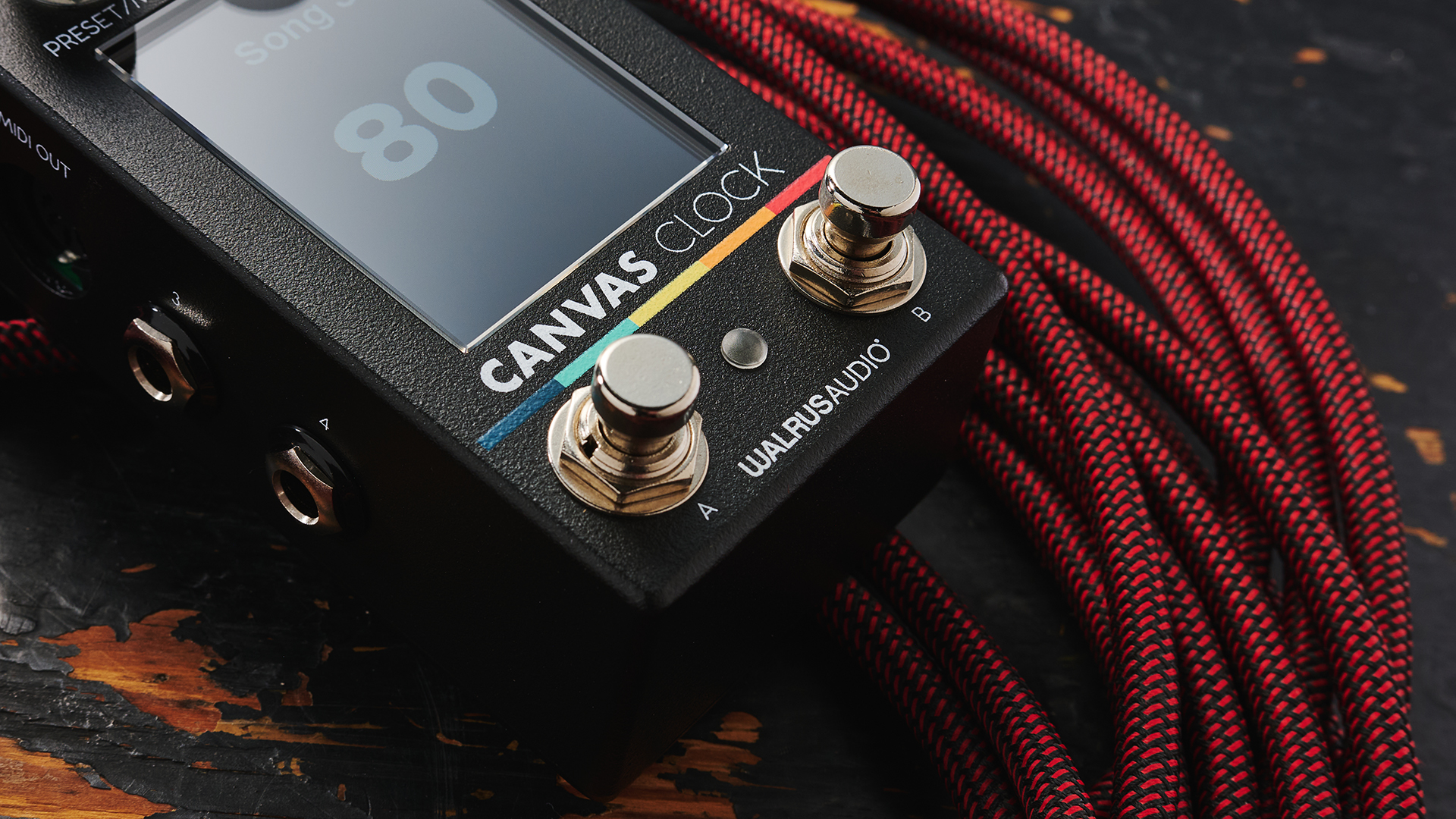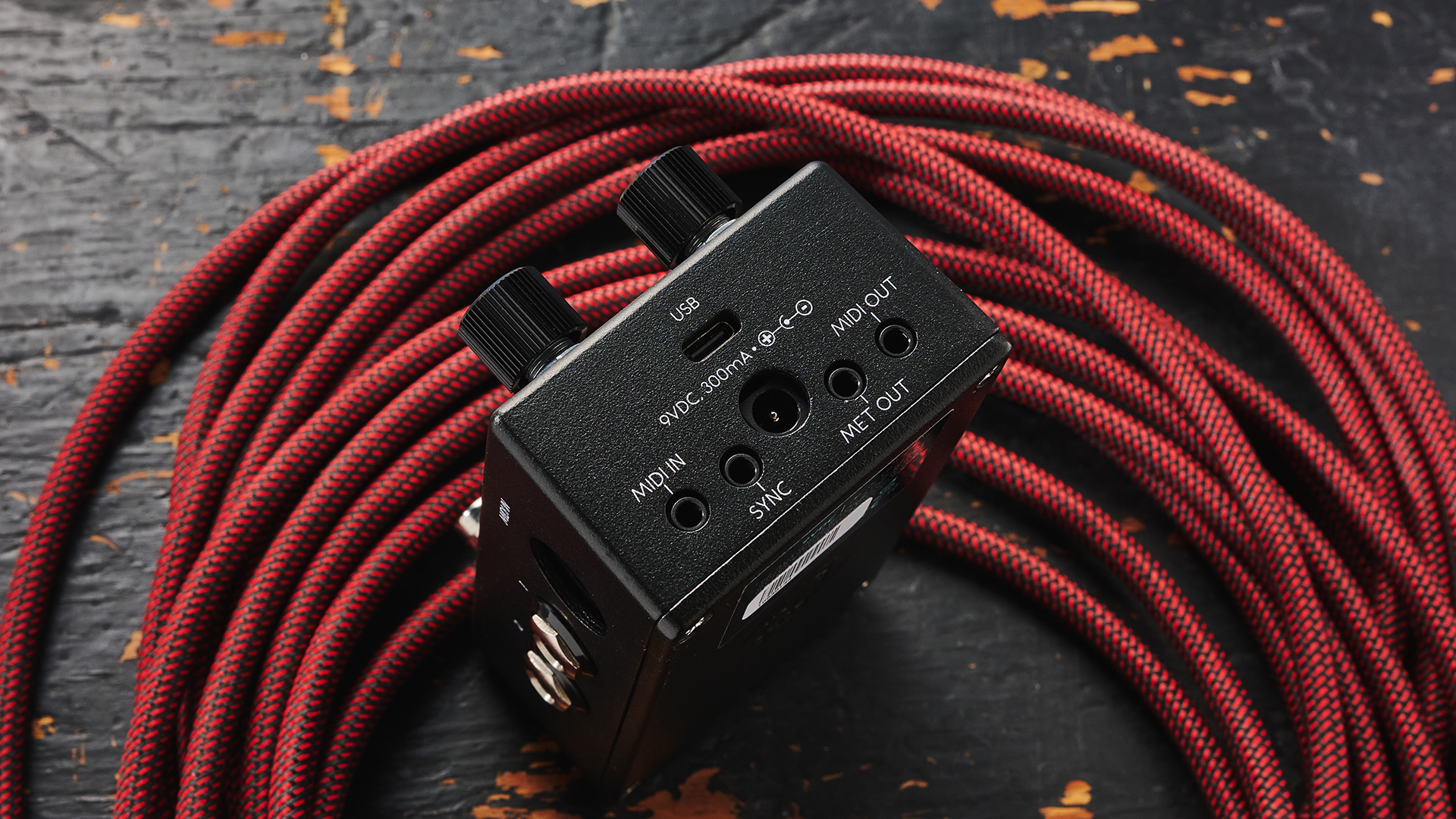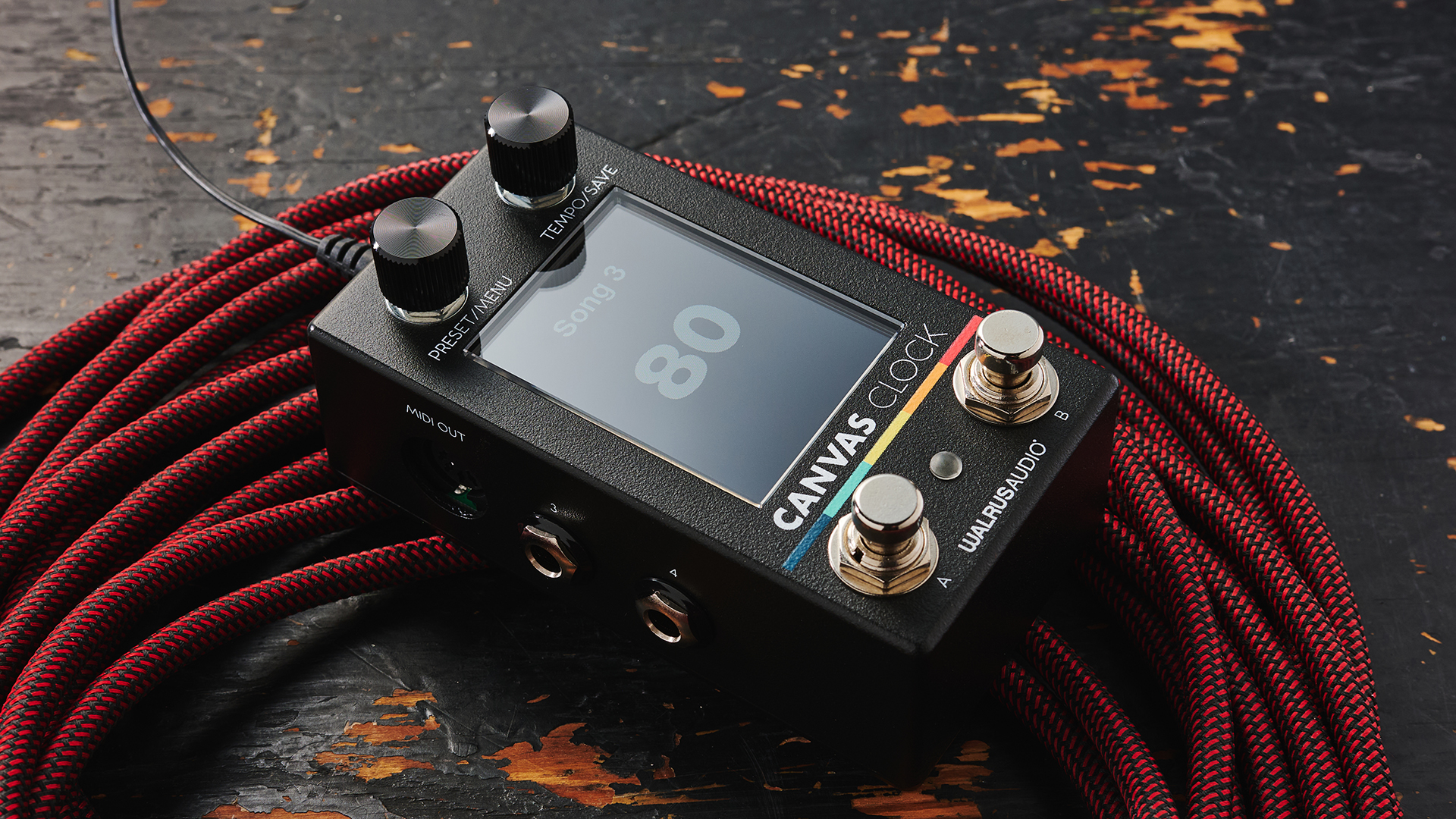
What is it?
The Walrus Audio Clock is a new entry into the brand's Canvas utility line. It's a unique pedal, billed as a MIDI and analog clock device, but in reality that undersells it slightly.
It combines the jobs of MIDI clock and converter, additionally bundling the ability to send MIDI control and program changes.
It is a little short of being a true MIDI switcher, but for simple program changes, there's not many single-box options in the market to match it. Put simply, if you're looking to unlock the MIDI functionality of your pedals, read on…
Specs

- Launch price: $299/£299/€349
- Type: MIDI clock and switcher
- Controls: Preset/Menu Encoder, Tempo/Save Encoder, A and B footswitches
- Features: MIDI clock, CV send, tempo sync, MIDI PC/CC send, computer editing suite
- Connectivity: 4x 1/4" jack (TS or TRS), MIDI In/Out (5-pin DIN), MIDI in/out (1/8" TRS), sync (1/8" TRS cable), metronome out (1/8" TRS), USB-C
- Bypass: N/A
- Power: 9V DC Center-negative, 300mA or USB-C
- Dimensions: 65 x 42 x 124 mm
- Options: N/A
- Contact: Walrus Audio

Build Quality
Walrus has always built solid pedals with cool graphics and the Canvas Clock is no exception. On the front it's got a huge, crisp screen, and a nice understated colourway. At a glance, the tempo is shown in large letters that will be clear even from across a dark club stage.
The only potential issue is a minor one with the input placement. To keep a small form-factor, its MIDI ports and power jack are directly soldered to the boards inside. This means there is a small gap between the connectors and edge of the enclosure. It's unlikely, but if a pint of beer or water finds its way onto your board, some could get into the pedal that way.
As a bonus, the pedal can be powered by USB-C, meaning you can simply connect to a computer to edit, rather than having to do it while connected to your pedalboard's power supply.

Usability

The Clock is overflowing with connection options. There's mini jack MIDI in/out, standard MIDI in/out, and four 1/4" jacks. Each of the 1/4" jacks can send tempo out, either as analog or MIDI, control voltage, or switch/expression in, so that it can be controlled by an expression pedal.
As well as the outs, there's ins for accepting BPM from an external source (via the sync jack) as well as the expected MIDI in. The sync out can be used for external devices like Eurorack, and as mentioned it can send CV for synths.
One of the key selling points of this pedal is whether or not it can eliminate the need for a laptop. The Clock has a web editor, and can be hooked up to a computer via USB-C for an easier editing experience, but all the functionality is available via the pedal.

Luckily for those that are averse to faffing with a computer, the Clock has a large screen for editing and two push rotary knobs. As a result, while editing is easier using a computer, it's perfectly possible to edit presets and advanced functionality on the pedal itself. The only features that are on the fiddly side are the ones you would expect, naming songs and sets, and editing macros.
The naming conventions are straightforward. What elsewhere might be called a 'scene' or 'preset' is called a 'song' here, and they're grouped into 'setlists.'
Luckily for those that are averse to faffing with a computer, the Clock has a large screen for editing and two push rotary knobs.
It's probably the macro functionality, sending MIDI CC or PC messages when a song is recalled, that will be the key selling point to power users. 128 macros are available with 15 messages per macro, meaning you can use song changes to turn off and on pedals, switch presets or settings as well as simply change MIDI clock tempo.
Verdict
Verdict: ★★★★½
As a MIDI clock, it's hard to justify the substantial price-tag, even if the form-factor is compact, and the user interface good. However, the ability to use this as a midweight MIDI brain for a gigging setup is what makes it somewhat unique. This does however beg the question of who the pedal is for.
A larger touring band is likely have a MIDI rig driven by laptops and switchers, while this is a bit more complex than 'grab and go.' As a result, its audience appears to be regularly gigging guitarists with several MIDI-enabled high end pedals on their 'board that nevertheless value compactness. Maybe that's a bigger niche than I think; if that describes you, then you're in luck.

Still, for most guitarists, this pedal is likely to be one of those 'don't need it…until you do' types of purchase. Even with two MIDI-enabled time-based effects on your pedalboard, justifying the money and space for a clock would be difficult. However, as a source for MIDI control messages as well as clock, it's easier to justify.
Guitar World verdict: Its niche application might eliminate this from consideration for a lot of players. But the Walrus Clock is deceptively powerful, should you want to leverage the power of your MIDI-enabled pedals without needing a computer or larger MIDI switching device.







